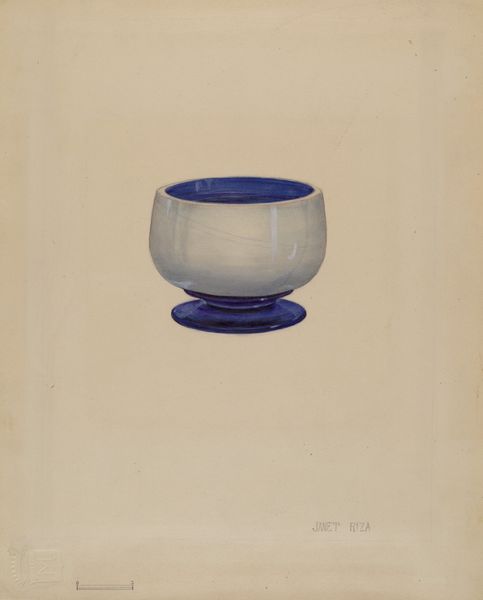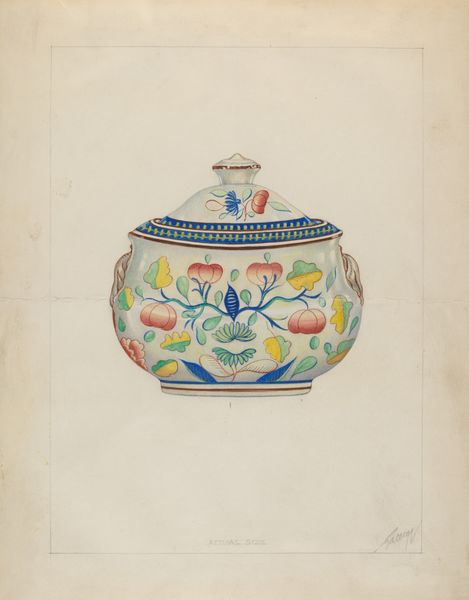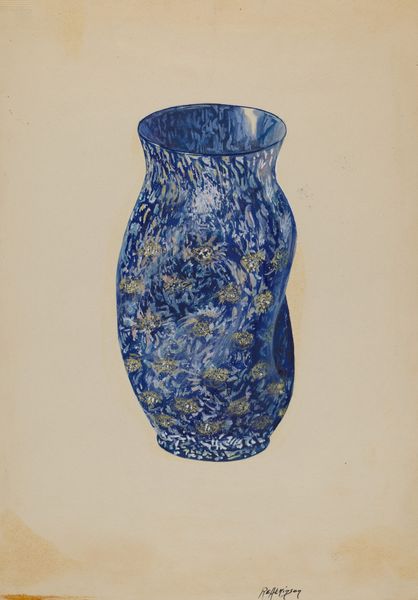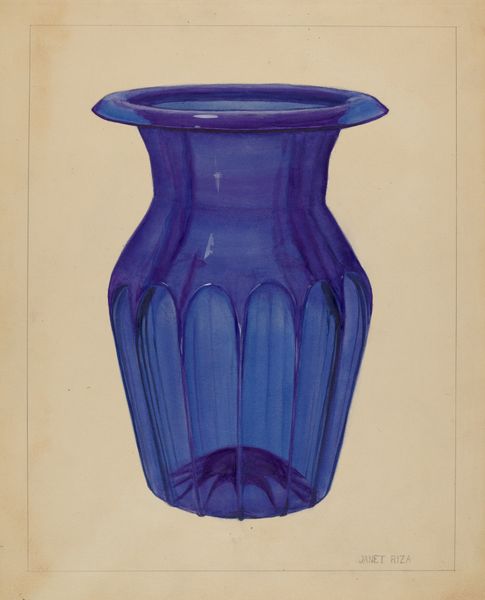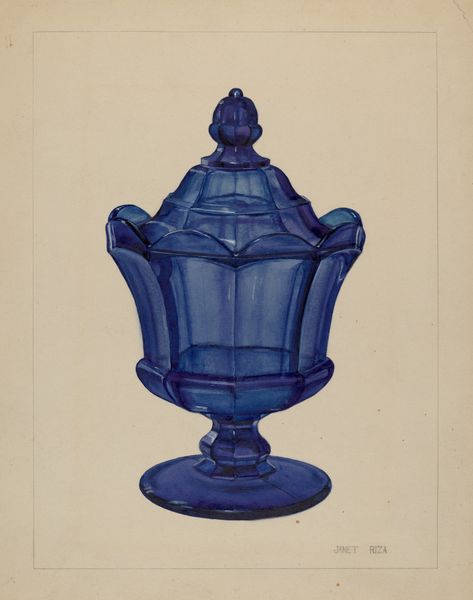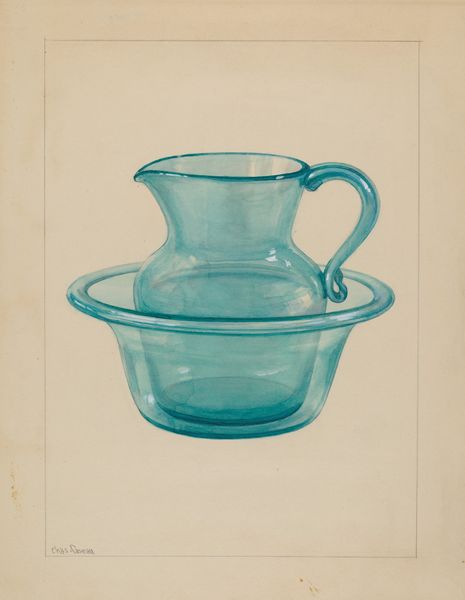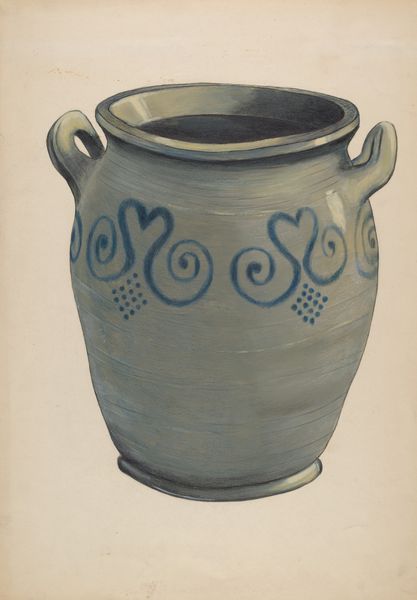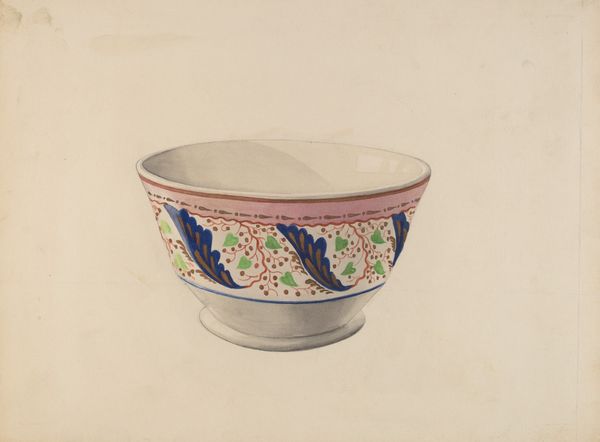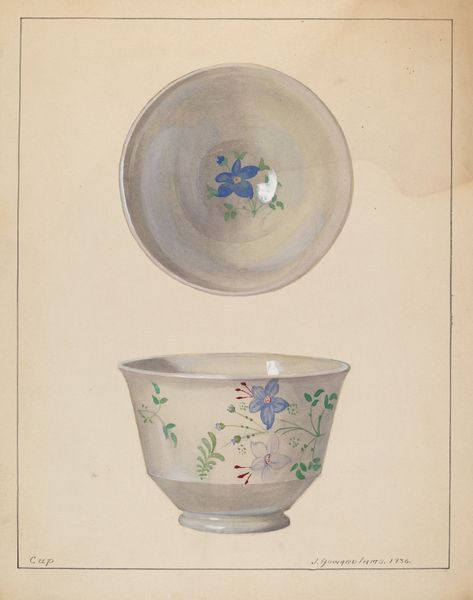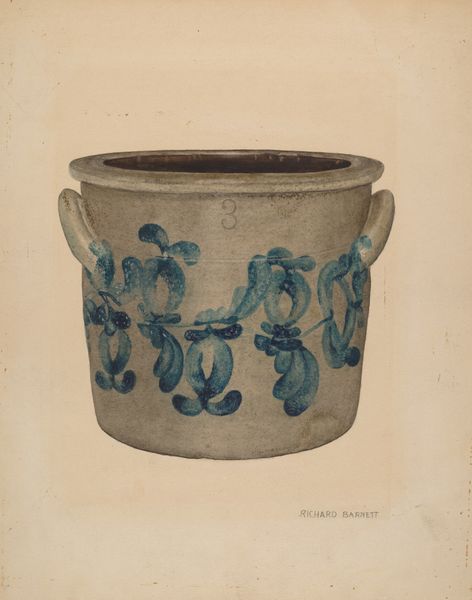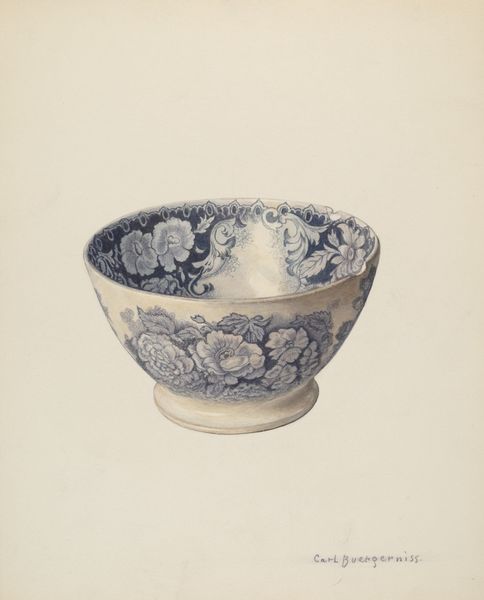
drawing, watercolor
#
drawing
#
watercolor
#
watercolour illustration
#
academic-art
#
watercolor
Dimensions: overall: 35.6 x 27.9 cm (14 x 11 in.) Original IAD Object: 4 1/4" High 3 3/8" Dia(top) 5 1/8" Dia(mid) 3 3/16"(bot)
Copyright: National Gallery of Art: CC0 1.0
Curator: Up next, we have J. Howard Iams’s “Sugar Bowl,” rendered in watercolor and drawing in 1936. Editor: It's simple, charming... feels almost like a botanical study mixed with folk art. The blues really pop against that creamy background. Curator: Indeed. The pansies stand out. They’ve long symbolized remembrance, thoughtfulness. Given this piece was made during the Depression era, one wonders if it speaks to a yearning for simpler times, for beauty amidst hardship. Editor: That resonates, particularly as sugar itself, a commodity then, and the vessel containing it, speak to both necessity and a subtle kind of luxury. Look at the smoothness he achieves with the watercolor, the implied texture. Was this intended as design for industrial production? Or something more unique? Curator: Iams was affiliated with the Index of American Design. These artists documented decorative arts, craft objects from earlier American eras. This would tie it back to memory and continuity in American visual culture. Editor: Ah, the act of preservation becomes key then, through the lens of craft, right? Capturing, through drawing, a kind of domestic history before mass-produced, and arguably less beautiful, alternatives take hold. Curator: Precisely! This "Sugar Bowl" isn't just a depiction. It's an emblem, a meditation on craft, daily ritual, and perhaps even collective identity. The act of using watercolor and drawing makes me also appreciate his careful documentation. Editor: Right, there is such loving precision at play. This piece allows us to pause, to appreciate both the humbleness and artistry inherent in the objects we surround ourselves with. Even those used to store our sugar. Curator: Beautifully said! Editor: Yes, thank you!
Comments
No comments
Be the first to comment and join the conversation on the ultimate creative platform.
